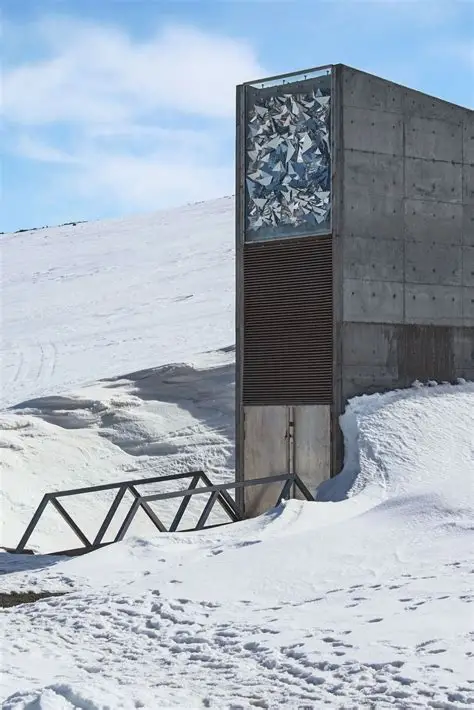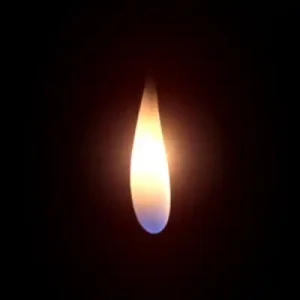Have you ever planted a seed and watched it grow into a plant?
Now, imagine a place where millions of seeds from all around the world are kept safe and frozen, almost like a giant refrigerator for the planet’s plants!
This place is real, and it’s called the Svalbard Global Seed Vault.
What is the Svalbard Global Seed Vault?
The Svalbard Global Seed Vault is a unique facility that stores seeds from around the world. These seeds are kept as backups to safeguard plant diversity in case of emergencies such as natural disasters, climate change, war, or diseases that could wipe out crops.
It’s sometimes called the “Doomsday Vault” because it helps protect the world’s food supply for the future.
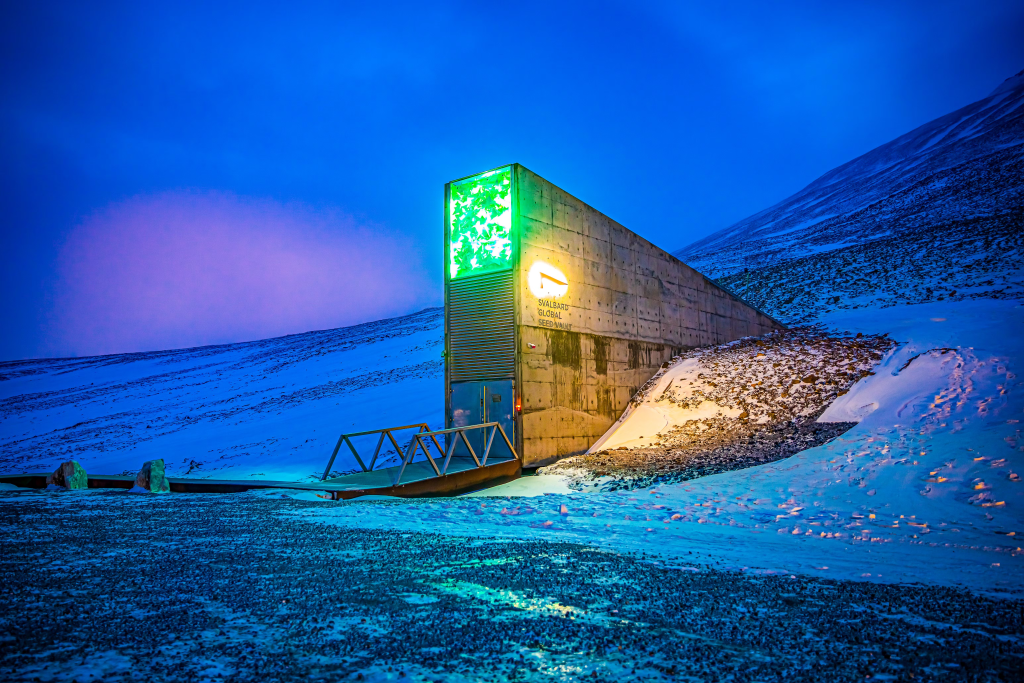
Where is it?
The vault is situated on the island of Spitsbergen, part of the Svalbard archipelago. This is way up in the Arctic, north of Norway.
Why so far away?
Because Svalbard is:
- Very cold, which helps keep the seeds frozen naturally
- Very safe, with no earthquakes or wars
- High up, so it won’t flood easily, even if sea levels rise
What does it look like?
The Seed Vault is built into the side of a mountain. It appears to be a long tunnel, with thick walls and a sturdy door.
Inside, it’s as cold as a freezer — around -18°C — perfect for preserving seeds for hundreds of years.
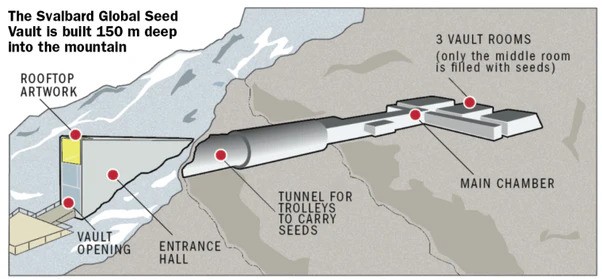
What kinds of seeds are stored there?
Seeds from all over the world are kept in the vault, including:
- Wheat
- Rice
- Maize (corn)
- Beans
- Vegetables like carrots and cabbage
- Rare plants that might disappear someday
The vault doesn’t grow plants—it only safely stores their seeds, like a backup library for nature.
Who sends seeds to the vault?
Countries from all over the world send copies of their seeds to the vault. These seeds are packed in sealed boxes, labelled and barcoded, and placed on metal shelves.
More than 1.2 million seed samples have already been stored, making it the world’s most extensive collection of crop diversity.
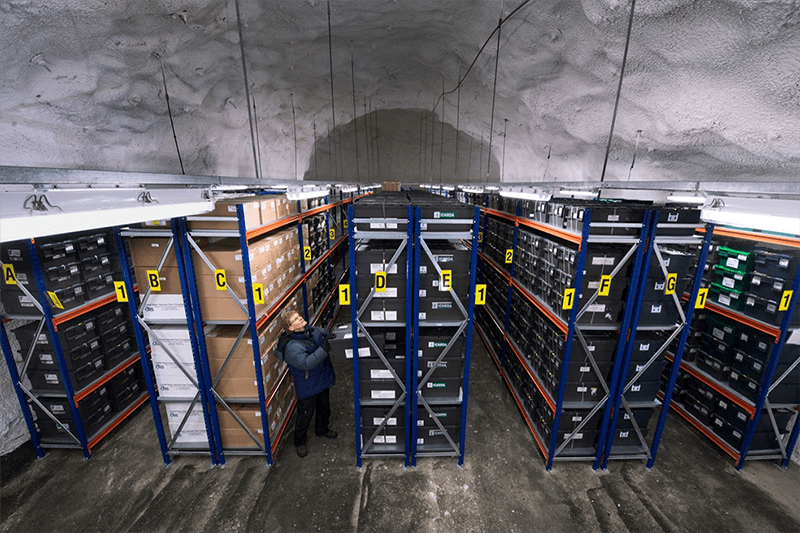
Even India has sent seeds of important crops to preserve them.
Why is this important?
Imagine if a flood, fire, or war destroyed all the farms in a country. If the seeds of essential crops are lost, people might not have enough food to eat.
That’s why the Seed Vault is so important. It:
- Protects food for the future
- Helps scientists and farmers restart farming if crops are lost
- Saves rare plants that might disappear due to climate change
Is the Vault always locked?
Yes! The vault is very secure. Only a select few trusted individuals are permitted to enter. It’s not like a museum or zoo—you can’t visit it like a tourist.
However, countries can reclaim their seeds if they are lost at home. It’s like a bank for seeds — they deposit them and withdraw only when needed.
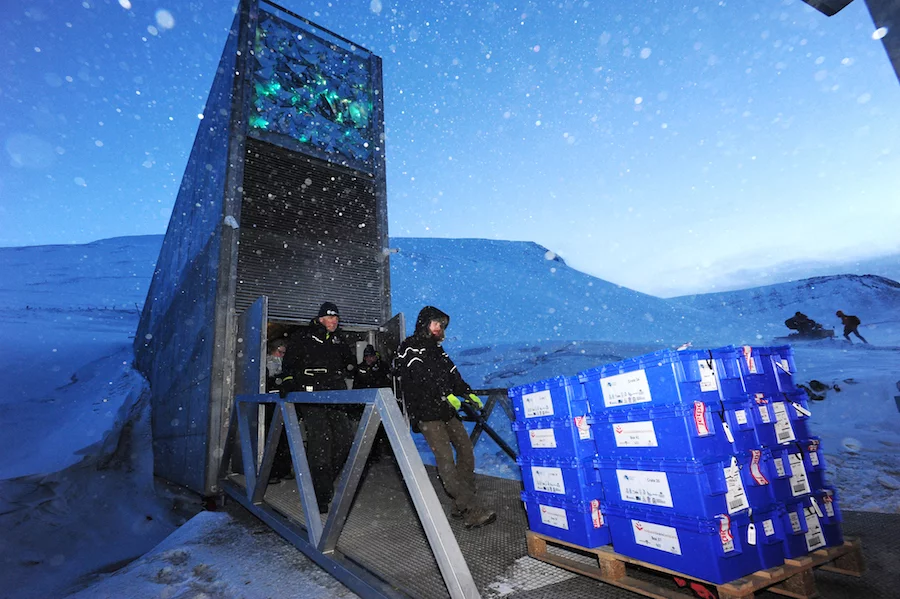
A real-life story
In 2015, a war in Syria destroyed a seed bank in the city of Aleppo. Scientists were able to retrieve copies of their seeds from the Svalbard Vault and replant the crops in safer locations.
That’s proof the vault works!
Fun Facts!
- The vault can store up to 4.5 million seed varieties
- It is built to survive disasters like nuclear explosions
- It uses minimal electricity because the natural cold helps keep the seeds safe
- The vault opened in February 2008
- It’s managed by the Norwegian government, the Crop Trust, and the Nordic Genetic Resource Centre
What can kids learn from this?
The Svalbard Global Seed Vault teaches us:
- The value of nature and biodiversity
- The importance of protecting our planet
- That people all over the world can work together for a common good
- Even small seeds can help save the future!
Maybe one day, you could become a scientist, environmentalist, or engineer who helps protect nature, too!
Creative activity idea!
Make your own ‘mini seed vault’ at home using:
- A box
- Paper packets labelled with vegetable or flower names
- Pictures or drawings of your favourite plants
You can even collect real seeds and learn how they grow!
For more interesting articles, please visit www.kidzherald.com

